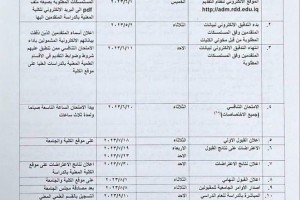

The College of Science, in cooperation with the Basrah Oil Company, the Rumaila Operating Authority, organized a series of lectures delivered by the lecturer, Haider Musa Jaafar. Aimed at training students of primary studies and learning how to analyze data and use programs that, through the application of seismic section data and a geographical information system to demonstrate the role of salt tectonics and tectonic movements in the development of the Zubair oil fields in southern Iraq.
The workshop included a synthetic study based on geophysical information for the southern and northern Rumaila fields and the Zubair field, in addition to Jabal Sanam, the geological phenomenon in southern Iraq as a result of the salt rush of Hormuz salts. (Hormuz salts, where seismic sections showed that the salts had managed to penetrate most of the deposits of the Triassic period in the structure of Rumaila. The seismic sections revealed the presence of a number of deep basal faults. In the region, one of these faults is located between the saddle separating the north and south of Rumaila. These faults have been reinforced by the phenomenon in satellite aerial photographs, which showed the change in the course of the Euphrates River.






